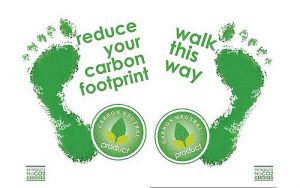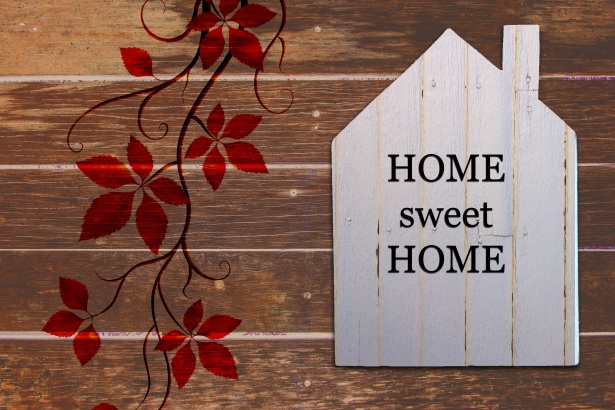
Photo source: http://bit.ly/2FsqHH4
You’ve got the power!
It’s no secret that many of us are becoming much more conscious of how our actions are affecting the environment and the world’s energy resources. We’re a nation more in-tune with the detrimental damage these huge energy businesses inflict upon the environment and are now looking for ways to reduce our carbon footprint as much as possible. The energy we use in residential properties makes up about one quarter of the UK’s carbon dioxide (CO2) emissions.
Reducing the power used to heat and light our homes can be relatively easy. In fact, you must have been living on a desert island with no Wi-Fi for the last few decades if you’ve missed the many initiatives persuading us to do just that.
When doing our bit to lower green house gas emissions, it really does begin at home. Whether it’s subsided insulation, boiler scrappage schemes or cavity wall insulation initiatives, we’re fast waking up to the fact that we need to use less gas and electricity at home to reduce our carbon footprints.
But what measures can you take straight away (for example if you’ve just moved into a new property) to immediately have a quick and positive effect on your energy usage?
Here are the top seven quick fixes to reduce your carbon footprint, compiled with help from expert research from energy efficiency pioneers, the Centre for Alternative Technology in Wales.
1. Draught proof
Brrr…the only draught anyone should experience in the comfort of their own home should be from a freshly opened can of beer. These annoying blasts of cold air emanate from chimneys, windows and door frames, through letterboxes and cat flaps, skirting boards, between floorboards, and where pipes and cables come into a room. Pretty much any small gap or hole. They’re not just uncomfortable, but also mean you need to turn the heat up to stay warm, which means burning higher amounts of fossil fuels, in turn increasing your carbon footprint. Luckily, they’re easy to stop.
Fill gaps at skirting boards, between floorboards and around plug holes etc with sealant. Unused chimney? Board it up or use or a chimney balloon, a clever device that will block the flue, but burst harmlessly if a fire is lit. Install seals on openings such as windows, doors, cat flaps and letterboxes. These are available in all good DIY shops and fairly easy to fit.
Also, if the draughts are coming in through window frames, fitted thermal curtains will greatly reduce heat loss and keep the room nice and cosy – at least at night time.
However, never try and completely make a room airtight as some airflow is necessary, particularly if you have a real fire.
2. Central heating
Central heating is your ally in the war against chilly rooms and frozen toes, right? Indeed it is, but your heating system can also be your worst enemy in terms of energy efficiency and fuel bills. Make it more friendly to the environment and your wallet by fitting thermostatic valves that add extra control to the heat of each room. Not just on or off. That way you can have your living room nice and toasty, and your hallways or kitchen just warm enough to take the edge off the cold.
3. Hot water
A bit like all of us, hot water tanks really appreciate an extra jacket when the temperature falls. It’s an indirect way of reducing your carbon footprint, by keeping your water tank warm and cosy. Buy one from a DIY shop if you have an older cylinder system, and also remember to wrap all hot water pipes in insulating foam sleeves.
4. Lighting
Low-energy bulbs are now the only type you can buy due to EU legislation that banned the manufacture of the old-fashioned incandescent ones. Hardly surprising, when only 10% of the electricity they used was converted into light, with the rest turning to heat.
But which of the low-energy options available is best?
Compact fluorescent lamps (CFLs) are very efficient, using 75% to 80% less energy than incandescent bulbs, so a 20W CFL replaces a 100W (watt) incandescent. They’ll take a few second to reach maximum output, however.
But even these have been superseded by an even more efficient light; the LED. These are available to fit most fittings and are particularly good for replacing spotlights and dimmable lights. They are more efficient than CFLs and will save you more money in the long term, plus provide maximum light output almost instantly.
According to the Energy Saving Trust, both CFLs and LEDs are a cost-effective option for most general lighting requirements. And the energy savings aren’t just good for the planet. Replacing a traditional light bulb with an LED of the same brightness will save you about £3 to £6 per year. And by replacing all the bulbs in your home with LED alternatives, you could save about £35 a year on your electricity bills. They’re great for your carbon footprint and your pocket.
5. Fridges/freezers
Okay, not really a quick fix but worth considering if you’ve just moved into a new property and the previous occupants have kindly left kitchen appliances like fridges and freezers. Modern models are much more efficient, so if they are very old, try and look past their vintage chic and think about good old-fashioned economy and how much electricity they are gobbling up.
6. Laundry
Washing machines use their energy to heat the water they use, so use a low temperature setting whenever you can and try and always wash with a full load. Tumble-dryers use lots of energy too. If you can, use a washing line to dry clothes as often as possible. Before you hang out, spin to get rid of as much excess water as you can; a 500rpm spin removes about one-third of the water and a 1100rpm spin removes half.
7. Cooking
Did you know that a gas cooker usually creates less carbon emissions than an electric cooker? You do now. This is because burning gas directly may be a more visible way to create CO2, but generating electricity in fossil-fuel power stations creates way more. In fact, research has shown that a gas hob leads to about half the CO2 emissions of most electric hobs (electric induction ones are more energy-efficient). What’s more, gas is lots more controllable so less danger of burnt pans or saggy soufflés. If you’re choosing a new oven, gas will ultimately create less greenhouse gas and reduce your carbon footprint.
For more advice on how to reduce your carbon footprint and make your home more energy efficient, visit the Centre for Alternative Technology’s site or get more useful advice from the Energy Saving Trust.

